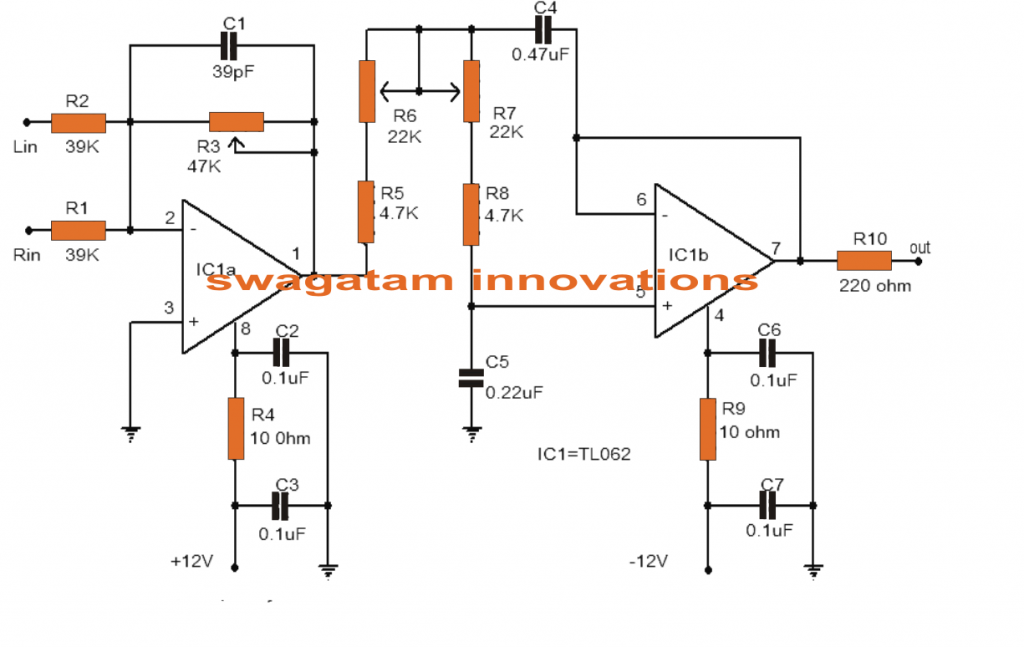In this post I have explained a simple low pass filter circuit which can be used in conjunction with subwoofer amplifiers for acquiring extreme cuts or bass in the frequency range 30 and 200Hz, which is adjustable.
How it Works
Several low pass filter circuits for subwoofer application are presented all over the net however this one is an upgraded example.
The circuit provided here utilizes the high efficiency opamp TL062 from ST Micro electronics. TL062 is a twin high input impedance J-FET opamp exhibiting minimal power consumption and large slew rate.
The opamp possesses outstanding digital attributes as well as being exceptionally compatible with this circuit.
Between the two opamps inside TLC062, one is connected in form of the mixer with pre amplifier stage. The left/right channels are linked to the inverting input of IC1a for mixing.
The gain of first stage may be tweaked utilizing POT R3.The output of the 1st stage is hooked up to the input of next stage via the filter circuit containing parts R5,R6,R7,R8,C4 and C5.
The second opamp (IC1b) functions as a buffer as well as the filtered output can be obtained at the pin 7 of the TLC062.
You may also want to read How to Build a High Power Subwoofer Amplifier
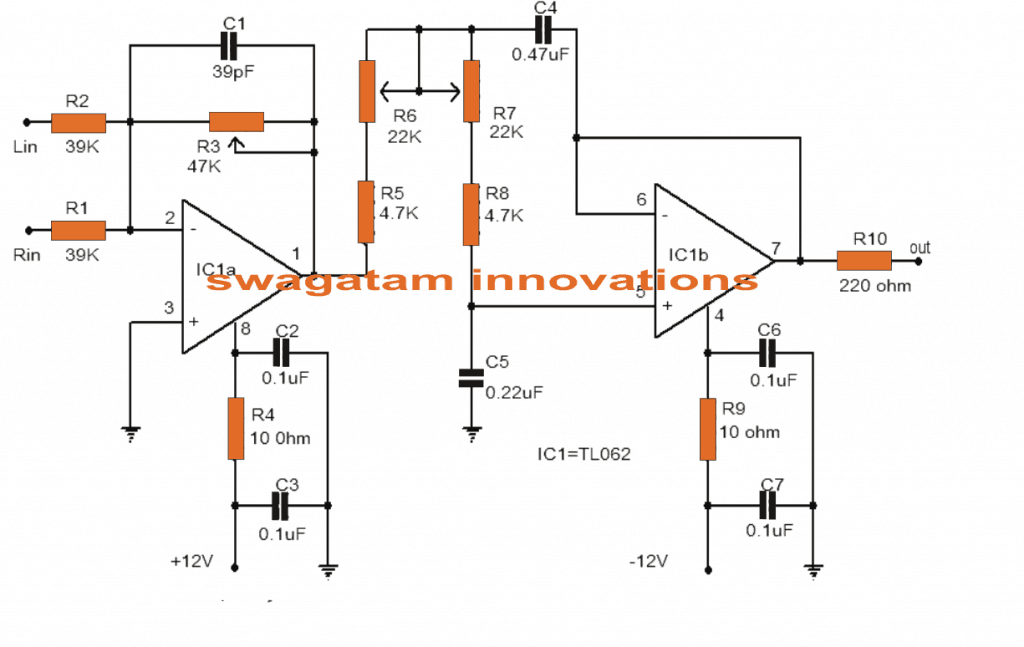
If you are interested to create your own low pass filter with a single IC 741 and customize it, then the following discussion might help!
Simple Active Low Pass Filter Circuit Using IC 741
In electronics, filter circuits are basically employed for restricting the passage of a certain frequency range while allowing some other band of frequency into the further stages of the circuit.
Types of Low Pass Filters
Primarily there are three types of frequency filters that are used for the above mentioned operations.
These are: Low pass filter, high pass filter and the band pass filter.
As the name suggests, a low pass filter circuit will allow all frequencies below a certain set frequency range.
A high pass filter circuit will allow only the frequencies which are higher than the preferred set range of frequency while a band pass filter will allow only an intermediate band of frequencies to flow to the next stage, inhibiting all frequencies which may be outside this set range of oscillations.
Filters are generally made with two types of configurations, the active type and the passive type.
Passive type filter are less efficient and involve complicated inductor and capacitor networks, making the unit bulky and undesirable.
However these will not require any power requirement for itself to operate, a benefit too small to be considered really useful.
Contrary to this active type of filters are very efficient, can be optimized to the point and are less complicated in terms of component count and calculations.
In this article we are discussing a very simple circuit of a low pass filter, which was requested by one of our avid readers Mr.Bourgeoisie.
Looking at the circuit diagram we can see a very easy configuration consisting of a single opamp as the main active component.
The resistors and the capacitors are discretely dimensioned for a 50 Hz cut OFF, meaning no frequency above 50 Hz will be allowed to pass through the circuit into the output.
Circuit Diagram
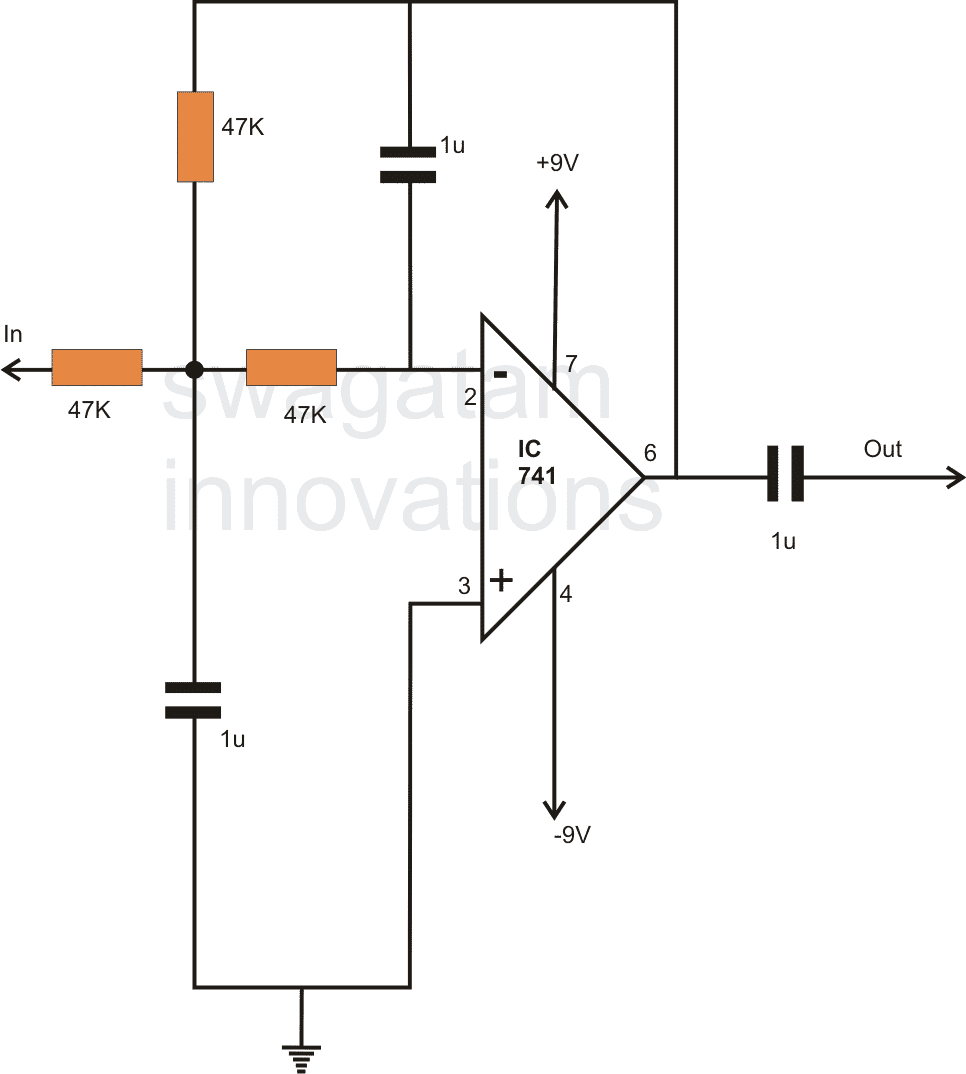
Subwoofer Low Pass Filter using Transistors
The circuit diagram exhibits an active low-pass filter layout that can be assigned any preferred cut-off point, across a large range easily by computing a couple of magnitudes for four capacitors. The filter includes an RC -network and a pair of NPN/PNP BJTs.
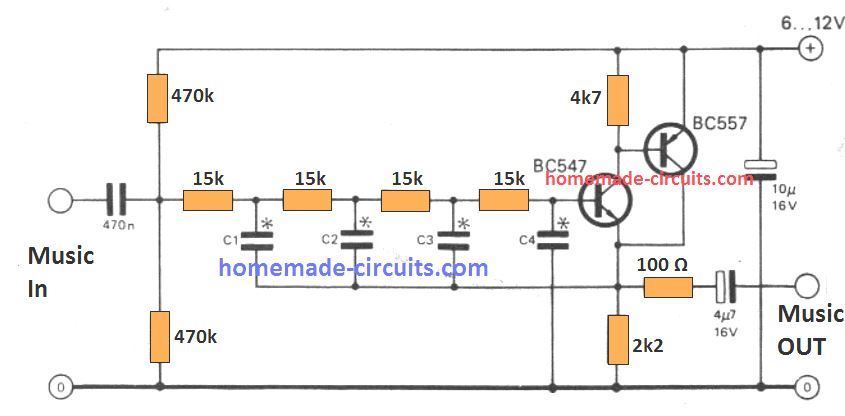
The transistor specifications shown could be straightaway substituted by some other varieties without altering the circuit's functionality. The supply voltage utilized must be between 6 and 12 V.
The capacitor values picked out for C1 to C4 establish the cut-off frequency. These magnitudes could be acquired from the below given two formulae:
C1 = C2 = C3 = 7.56 / fC
C4 = 4.46 / fC
Here, fC provides the desired cut-off frequency (in Hertz). In this formula the amplitude response is down 3 dB, and the values for C1 to C4 are calculated in micro farads (If we use the unit in kHz, the result will be presented in nanofarad values and putting MHz will create picofarad units.) As an example the calculated effect is indicated for a filter constructed with C1 = C2 = C3 = 5n6 and C4 = 3n3.
The '-3 dB point' in this scenario develops at 1350 Hz. One octave greater, at 2700 Hz, the attenuation is already 19 dB.
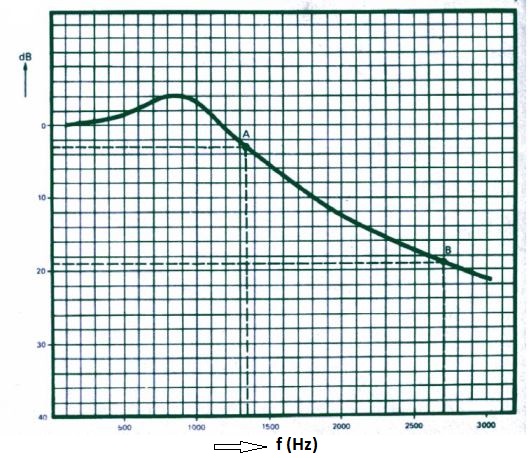
For technical explanation of the circuit you may refer to the data provided here.
Deep Bass Generator using LM324 IC
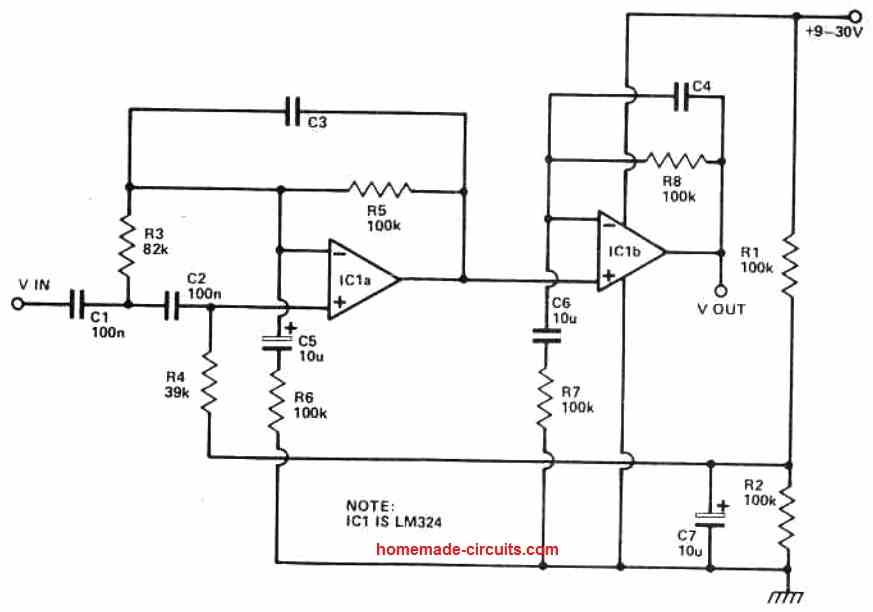
The well-known quad op-amp LM324 serves as the circuit's foundation. Four separate op amps of type 741 are included in this gadget.
It should be noted that they are capable of outputting 2V RMS of a 20 kHz sine wave without experiencing slew rate issues, which is more than enough to clip 99.99% of all known power amps.
These op amps' crossover distortion issues are solved by biasing their output stages into class A using R7 and R10.
A Butterworth second order filter made out of C1, C2, R3, and R6 eliminates all sounds below 2OHz, preventing amplifier overload from record warp signals.
The plateau in the circuit's response is created below the frequency set by the reactance of the capacitors by R5 and C2 working with R8 and C4. The deep bass generating circuit must be connected between the music source and the power amplifiers.
